2023 Kia Soul EV Review

FAST FACTS
| Motor: | 1x permanent-magnet synchronous motor |
| Battery Capacity: | 64.0 kWh |
| Output: | 201 hp, 291 lb-ft |
| Transmission: | 1AT, FWD |
| CAN fuel economy (Le/100KM): | 1.9/2.4/2.1 |
| Range: | 383 km |
| Starting Price (USD): | N/A |
| As-Tested Price (USD): | N/A |
| Starting Price (CAD): | $44,895 (inc. dest.) |
| As-Tested Price (CAD): | $53,895 (inc. dest.) |
Your eyes do not deceive you, American readers: the Kia Soul EV lives on, you’ve just got to head north to find one.
Over the years, Canada has enjoyed a handful of unique models our southern neighbors have not. The Nissan Micra, the Toyota Echo hatchback (pre-Yaris), the Chevrolet Orlando—an ironic one, that. The third-generation Soul’s all-electric variant was meant for the land of Stars and Stripes too, but complications in early 2020—ahem—had Kia refocus its US EV plan with the one-two punch of the EV6 and latest Niro EV.
We like those two cars well enough. Has Kia oversaturated the market with a trio of cars that are all close to one another in price? Or is Kia US missing an opportunity for a stylish anchor to its EV lineup? We spent a week with the Soul EV to find out.
Get a Quote on a New 2023 Kia SoulWhat’s new?
The Soul sees a subtle facelift for 2023—or at least, the gas model does. The EV sticks to the ultra-thin headlights the third generation model debuted with, along with a unique bumper including a body-color insert over the top half of the lower intake. Unique, textured five-spoke wheels round out what remains—to these eyes, anyway—a cool, confidently styled lil’ box. Kia’s design language has gone very avant-garde as of late, yet I’d say the Soul, Sorento, and EV6 are some of the brand’s best works, cohesive and eye-catching without seeming overly fussy.
Or, as more than few folks called it, the Soul looks like a stormtrooper helmet.
At least it has better aim than the Emperor’s crew. The Soul EV sticks to the front-drive setup of every other Soul, keeping curb weight reasonably low for an EV (3,867 pounds / 1,754 kilograms), and literally low in the chassis for sharp responses. The carryover lithium-ion battery pack is 64.0 kWh, very slightly smaller and less efficient than the one in the new Niro. The Soul’s older drivetrain is hiding a serious advantage over its younger sibling, however.
A quick glance at the spec sheet shows both the Soul EV and Niro EV rock up with 201 horsepower; solid amounts for such small packages. The Soul has a chunky 291 pound-feet of torque, however, 103 lb-ft more than the Niro. Single-charge range is quoted at 383 kilometers. There’s also a smaller, 39.2-kWh option, which chops both power (134 hp) and range (248 km / 154 miles).
City dweller supreme
Driving the Soul EV in Canada’s largest city feels like activating a cheat code. That instant-access torque in such a small, maneuverable package is addictive. The Soul’s boxy shape and pushed-to-the-corners wheelbase makes it easy to see out of, and slot into tight spots.
Even with the rebranding as a pseudo-crossover, the Soul still drives like a car. Thankfully. The steering is light and accurate, keeping the little guy feeling eager around town. On even the shortest, most decrepit on-ramps that make up Toronto’s Gardiner and Don Valley Expressways, the Soul has no issues keeping up with traffic. At speed it rides with a calm softness that defies the sub-compact class, though the winter tires of our tester do make for more noise than usual.
This being an older iteration of Kia’s EV setup, there’s regenerative braking with multiple levels, but no dedicated one-pedal mode. It comes close, but under light-jog speeds, the Soul awkwardly rolls on. Drivers can hold the left wheel-mounted paddle if they want to come to a stop, like in a Chevy EV.
Big on space…
During a particularly busy week, I spent a lot of time in the Soul’s cabin, and it kept the good vibes going. The dashboard design is distinctly old-Kia, with a bulbous central section instead of the techy edginess found in the Niro or Sportage. It might not be as pretty, but the button-festooned climate control section gets no complaints from me for sheer practical usefulness. I like the funky touches along the periphery, too: the combined speaker/vent and carved out metallic texture section does a great job of making the Soul feel spacious.
Material quality isn’t quite as good as the new Niro’s best bits, but it’s more consistent.
Front-seat comfort is high, especially with the addition of heated and ventilated thrones—not that the latter gets much use in late autumn. The sheer height means headroom is a non-issue, too. We stuck a pair of cousins in the back for a family dinner and they were surprised at the adult-friendly levels of legroom. It’s an okay space, though the Soul’s grandpa-like trend of continuously rising beltlines each generation means there’s less natural light than you might expect.
Other nitpicks include the lack of a powered tailgate, and a smallish wireless charger that rarely maintained an actual charge. The latter is a minor annoyance, since any phone mirroring needs a leash anyway, but the former is surprising for something at $50,000.
…Short on range
Things were going well with the Soul. We had an understanding. Even if its efficiency was only middling, I didn’t mind. It’s the winter tires, I’d shrug, and the dropping mercury.
Then the range anxiety hit.
During a trip out of town on the weekend, I had planned a charge on the way home. It’d be fine, with enough of a buffer to not worry. So when we left a friend’s birthday and the indicated range was shy of the charging station, I got a little worried. I planned a detour to a fast charger and we’d have 20 km to spare.
Then that started dropping too.
Even though the temperature was hovering right around freezing (0 C / 32 F), we turned off the heat. We unplugged my phone. I set the cruise control to 10 km/h under the highway limit and stuck to the right lane. Still the Soul’s estimated range was disappearing roughly 10-percent quicker than Google Maps’ remaining distance. Only once we were in the city, where the Soul could cruise at a comfortable 50 km/h from one end to the other—thank you, Hamilton’s timed traffic lights—did the prognosis improve.
As the little Kia began to suck down the electrons—not far off its maximum of 100 kW, I might add—I checked the numbers. It had done just 296.6 km (184.3 mi) with 6 percent battery remaining, suggesting an effective range around 314 km. That’s with babying, extreme near the end there, but it’s not like I was trying to set lap records throughout the week either. A 20-percent cut to effective range, before the weather gets real poor, or a driver sets the cruise control to keep up with traffic at all times, suggests even more cuts down the road.
Dollars and sense
In Canada, the 2023 Soul EV starts from $44,895 CAD, including destination, and is available at all EV-certified Kia dealers nationwide. That nets the smaller-battery, shorter-range model, which relegates the Soul to city life. This is the Limited trim, which adds $9,000 CAD to the bottom line.
If that seems like a lot for a Soul, even one as muscular as the EV, well… yeah, you’re right. The new Niro EV might lack torque but counters with more tech and range (407 km) for barely more money ($54,945 CAD) in its respective top trim. Or maybe you want more style, range, and power? A Kia EV6 RWD Long Range ($55,795 CAD) is tempting, if you can find one. All three of these rides come with federal incentives too, and in some cases, additional provincial ones on top.
Verdict: 2023 Kia Soul EV Review
Is America missing out on the 2023 Kia Soul EV? Yes and no. There are more cities, dotted closer together, across the 50 states, and it’s in these urban areas where the Soul excels. Small, quiet, and pleasant to drive, it’s an oasis of calm in the concrete jungle.
It’s easy to argue that Kia doesn’t need the overlap, though. The price proximity between Soul, Niro, and EV6 makes the Soul look expensive, especially as it lacks some of the bells and whistles of its siblings. There’s a certain grace that comes from picking just the right amount of car for your use case, and I firmly believe the Soul EV covers plenty of folks’ needs. But for $2,000 more, I’d be lying if I told you I wouldn’t put my name on an EV6 RWD Long Range wait list instead.
FAQs
How much does the 2023 Kia Soul EV cost?
The Soul EV starts from $44,895 CAD. The Limited, with a larger battery and longer range, rings in at $53,895 CAD.
When can you buy the 2023 Kia Soul EV?
In Canada, pretty much any time, from any of Kia’s EV-certified dealerships.
What is the range on the 2023 Kia Soul EV?
The official range is quoted at 383 km (234 miles).
Become an AutoGuide insider. Get the latest from the automotive world first by subscribing to our newsletter here.
LOVE IT
- Near-perfect city runabout
- Funky inside and out
- Spacious
LEAVE IT
- Range is tough to match
- Expensive
- No power tailgate

Kyle began his automotive obsession before he even started school, courtesy of a remote control Porsche and various LEGO sets. He later studied advertising and graphic design at Humber College, which led him to writing about cars (both real and digital). He is now a proud member of the Automobile Journalists Association of Canada (AJAC), where he was the Journalist of the Year runner-up for 2021.
More by Kyle Patrick



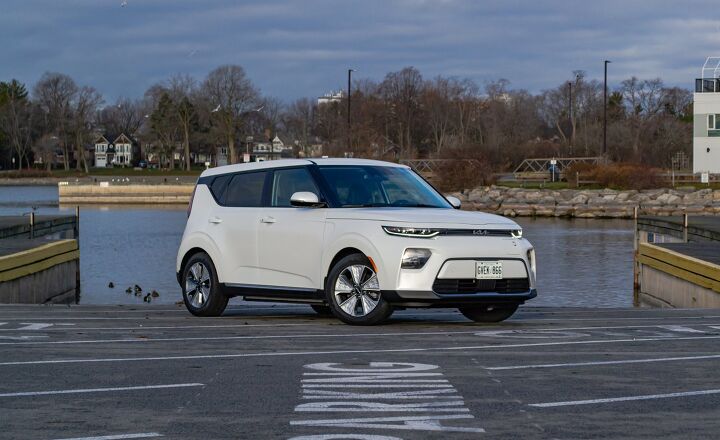





















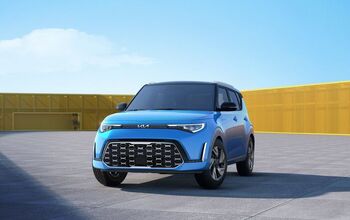
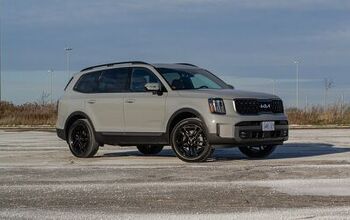

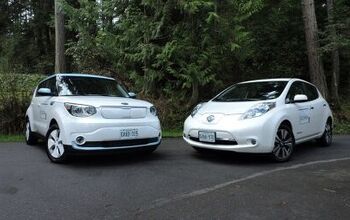
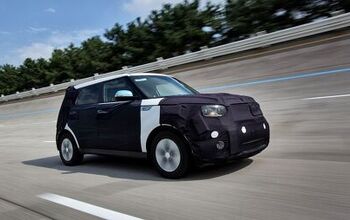


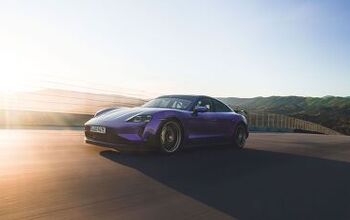


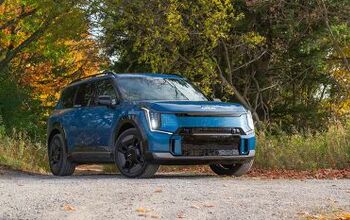

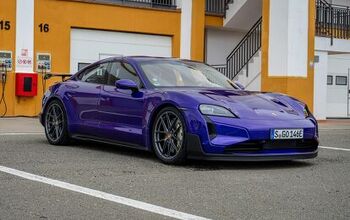

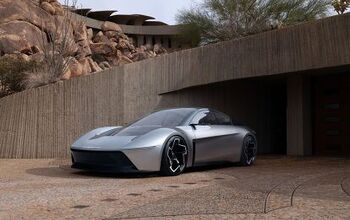
Comments
Join the conversation
I will stick to a ICE ICE car baby
Looking forward in learning more about the Kia Soul... The GT line is the model im leaning more towards... I like the idea of the big fog lights too.